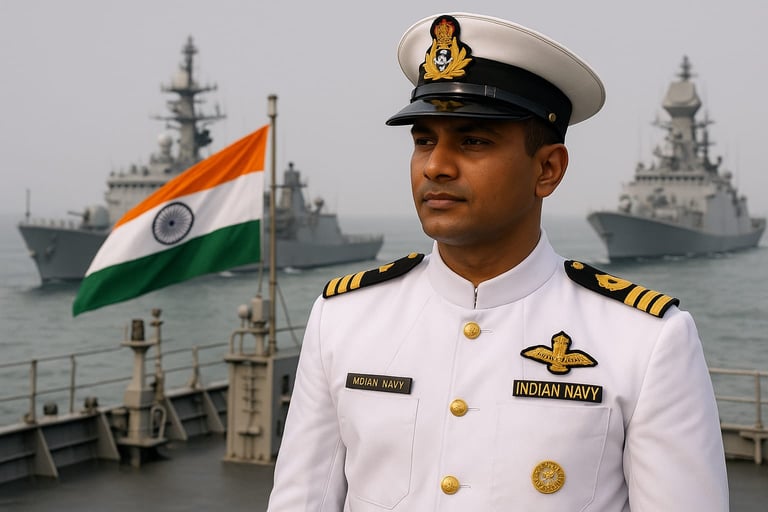Red Sea & Indo-Pacific Tensions – Role of Indian Navy
In today’s geopolitical chessboard, the ocean isn’t just a route — it’s a battlefield.
GLOBAL DEFENCE
The Red Sea Crisis: A New Threat to Global Trade
The Red Sea, a key maritime artery connecting Europe and Asia, has become a zone of frequent disruption. Houthi rebels from Yemen, using drones and anti-ship missiles, have attacked merchant vessels and fuel tankers — triggering global alarm. In response, Western navies launched Operation Prosperity Guardian, a coalition to protect freedom of navigation.
India’s Response
The Indian Navy deployed warships like INS Kolkata, INS Chennai, and INS Visakhapatnam for escort duties.
Naval commandos (MARCOS) have been on rescue standby during piracy alerts in the Gulf of Aden.
India launched Operation Sankalp to safeguard Indian-flagged merchant ships in West Asia.
With over 70% of India’s oil imports and nearly $200 billion in trade passing through this route, the Red Sea is not distant — it’s deeply strategic.
From the choke points of the Red Sea to the deep waters of the Indo-Pacific, maritime tensions are rising fast. Piracy, drone strikes, blockades, and military drills are turning sea lanes into high-stakes flashpoints. Amidst this evolving turmoil, the Indian Navy is not just watching — it’s leading. With a combination of strategy, strength, and diplomacy, India’s blue-water force is playing a critical role in securing vital interests, protecting trade, and maintaining balance in an increasingly volatile region.
Indo-Pacific: The Emerging Maritime Battleground
The Indo-Pacific region is now the epicenter of global power play. As China expands its presence via the Belt & Road Initiative (BRI) and aggressive naval posturing in the South China Sea, regional democracies are pushing back. The waters around the Straits of Malacca, Andaman Sea, and South China Sea are more militarized than ever.
🛳️ Indian Navy’s Indo-Pacific Moves:
Conducting joint exercises like Malabar (with US, Japan, Australia) and Milan with 50+ nations.
Operationalizing the Andaman & Nicobar Command as a strategic tri-service post.
Strengthening naval ties with ASEAN, Australia, France, and Indian Ocean littorals.
Regular deployments of aircraft carriers like INS Vikrant and INS Vikramaditya in Indo-Pacific waters.
India’s Sagarmala Vision is no longer just about development — it’s about maritime dominance and security.
🔱 Why the Indian Navy Matters More Than Ever
India is no longer a silent observer in global maritime affairs — it's becoming a first responder.
Geopolitical Diplomacy: Naval diplomacy is helping India form deeper defence ties.
Maritime Security: India is securing Sea Lanes of Communication (SLOCs) — vital for trade and oil.
Blue Water Capability: With expanding submarine fleets, indigenous destroyers, and satellite-linked surveillance, the Navy is now capable of projecting power far beyond India’s shores.
In a multipolar world, the navy is not just a warfighting tool — it’s a strategic instrument of influence.




